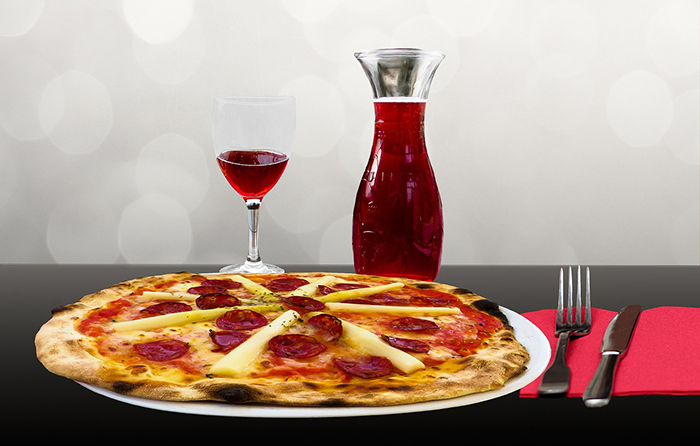
People eat at restaurants for many reasons:
It’s convenient. The food is delicious. We crave social interaction. We want a new environment. We like novelty. We can’t read nutritional labels – out of sight, out of mind.
I used to dine out frequently. A few years ago, I resolved to cut back. But I can’t snap my fingers and force myself to quit. Willpower is weak.
To create sustainable change, I need to discover the root cause. WHY am I dining out? There are plenty of potential reasons: taste, socialization, atmosphere, convenience. What’s motivating me?
This isn’t a theoretical question. It’s mandatory, if I want to change.
The Power of Habit
A few years ago, I read the book The Power of Habit by Charles Duhigg. When I reached the end, I immediately flipped back to the beginning and started re-reading. It’s that good.
Charles had a habit of buying a chocolate-chip cookie every afternoon. He gained eight pounds. His wife made pointed comments about his growing belly.
He put a Post-It note on his computer that said “NO MORE COOKIES.” Epic fail. The next afternoon, he was gnawing on a cookie.
“It feels good, and then it feels bad,” he wrote. “Tomorrow, you promise yourself, you’ll muster the willpower to resist. Tomorrow will be different.”
“But tomorrow the habit takes hold again.”
He turned to psychology for the answers. Experiments show that there are five categories that serve as habitual cues:
- Location
- Time
- Emotional State
- Other People
- Immediately Preceding Action
This makes sense:
Location — When we’re at our desks, we work (or scroll Facebook). When we’re in the driver’s seat, we drive. When we’re sitting on the toilet … well, you get the idea.
Time – We don’t think about changing our socks in the middle of the day. But in the morning and at night, it’s automatic.
Emotional State – Do you know anyone who scarfs chocolate when they’re upset? Enough said.
Other People – You act differently around specific people. You discuss certain subjects. You develop a slang or vernacular. You order certain types of food or drinks. You feel relaxed, uptight, bored, happy.
Immediately Preceding Action – Back to the toilet example. At a certain moment, you reach for the toilet paper. You don’t deliberate this decision. You don’t weigh the pro’s and con’s. It’s a reflex.
Charles wanted to apply this psychology lesson to his own life. So every time he felt the urge to buy a cookie, he jotted down some notes:
Location: Sitting at desk
Time: 3:36 pm
Emotion: Bored
Other People: None
Preceding Action: Sending Email
He continued taking notes daily until he saw a pattern. Four out of five of these factors fluctuated. Only one stayed constant – the time of day.
“The reward I was seeking was a temporary distraction,” he wrote. “And the habit … triggered between 3:00 and 4:00.”
So he found a different way to grant himself the same distraction. Rather than buying a daily cookie, he started taking a 10-minute break to chat with a friend, everyday between 3 pm and 4 pm. He even set an alarm on his watch for 3:30, to remind himself to do this.
It worked.
How to Stop Eating at Restaurants
Back to the restaurant dilemma. There are plenty of reasons I might eat at restaurants: taste, socialization, convenience.
If I’m dining out for convenience, my alternative must also be convenient. If I’m dining out to socialize, my alternative must also be social. If I’m dining out for taste, my replacement must be tasty.
It’s not enough to simply pledge to “eat out less.” I had to decipher the root cause. I needed to identify the trigger.
Like Charles, I began observing patterns. Every time I felt tempted to suggest a restaurant, I’d jot down notes.
The trigger, I discovered, is that I want a new environment.
I work from home. If I haven’t left the house by evening, I feel stir-crazy, so I text a friend to say, “Let’s try that new Mexican place.”
Once I identified this root cause, I looked for alternatives featuring the same reward. I started working from coffee shops. I began running mid-day errands. I got a gym membership.
I get the same reward — a new environment – without spending hundreds at restaurants.
Habits are Hard to Break
I could have written a simple blog post that says, “Top 10 Ways to Save Money. #1: Stop dining out.” But that would be intellectually lazy and ineffective.
I could have written a blog post that says, “Top 10 Ways to Save Money. #2: Drop your gym membership. #3: Avoid coffeeshops.” But those tips would be counterproductive in my situation.
When it comes to saving money (and behavior change), we don’t have a knowledge problem. We know what we “should” do. But we struggle to integrate these tactics into our lives. Behavior-change requires more than a “top 10” list post. It requires a deeper look at our motivations and triggers.
We can’t change our behavior with Post-It notes, pep talks and Top 10 lists. We can only change our habits by understanding what drives us. We change our habits when we learn how to manage our urges and needs, rather than fight them or deny them.
If you’d like to break a bad habit:
- Jot notes on the location, time, emotion, people and immediately preceding action. Then look for patterns.
- Ask yourself what benefit you receive from the habit. Then look for alternatives.
Finally, start small. You can’t tackle 10 habit changes at the same time. Focus on one.